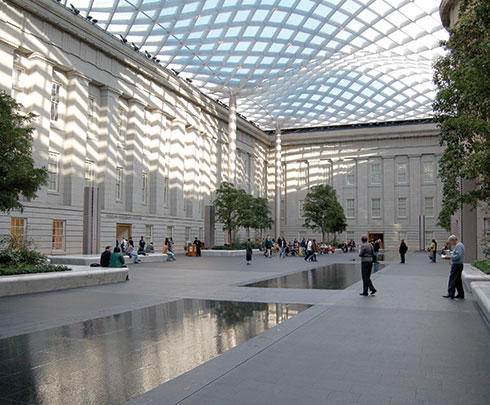The early design process is exhilarating. Renderings are created that help the owner visualize the designer’s intent, and the excitement is often contagious. However, when the vision is translated to the specification of materials and systems, and the associated cost is realized, value engineering often comes into play. Too often at this stage, drastic cuts need to be made to get the project in budget, so broad changes are made to the design instead of finding a way to fulfill the design intent with a different approach. Key to success is involving your suppliers earlier in the design, as well as engaging in a true value engineering process so the architectural vision can still be realized.
GIVING NATURAL STONE A CHANCE
Although most designers would opt for the natural beauty and benefits of using a maintenance-free stone to bring their vision to reality, the material isn’t always considered as there is a perception it is too expensive. In reality, natural stone can be a very cost-effective design solution if integrated into the project early in the design process. Simply, there are very few projects in which natural stone is not suitable or desirable in some form or fashion. Unfortunately, designers often feel compelled to specify light-weight or low-cost building products based on their early understanding of the project budget. This is unfortunate as the lifecycle cost of natural stone is typically not taken into consideration. Natural stone offers incredibly low cost when evaluated over its lifespan in comparison to alternative materials.
Another misconception is the notion that it is a waste of money or not productive to bring a material supplier into the planning process until the design is finalized. In reality, it is key to involve a manufacturer as soon as possible as preliminary budgets assist designers in understanding how various aspects of stone design affect cost. Further, establishing a trusting relationship ensures best practices are discussed early and respected through the buyout process.
Lead times also are a key variable and very important in the manufacture of a natural product. For example, the availability of certain sizes or characteristics is not predictable in many stone quarries. Details that may appear simple on paper could require extensive tooling and material loss during the fabrication processes, driving costs over budget, as well as adding to the schedule. It may be advantageous to work with a firm that has invested capital in state-of-the-art computer numerical control (CNC) equipment that can deliver unmatched quality for reduced costs.
UNDERSTANDING VALUE ENGINEERING
Value engineering is a by-product of being at the table early. It allows a project team the opportunity to find an option that fits them. With value engineering, you are not sacrificing the quality or integrity of the project. Simply, value engineering is beneficial to the project team in that it saves them from the daunting task of going through hard bids and trying to make sense of things that typically aren’t an “apples to apples” comparison. Further, value engineering should happen throughout the entire process, not simply when the project is over-budget. The benefit of utilizing value engineering is making sure you get what you want and you don’t sacrifice the integrity of the project. The project team members are able to decide what they want as benefits are weighed with an eye toward the long- and short-term investment.
To further develop this point, let’s focus on the word “value.” Value is the ratio of performance to cost. Value can be increased by improving the performance/function, or by reducing the cost for the same performance/function. Value engineering should never reduce the performance/function of the item being addressed.
For example, there are many instances in which natural stone manufacturers are capable of reducing cost with no impact to the original intended aesthetic or functional performance of their material. A good example is a recent project in the Washington, D.C. area. The designer wanted to use large cubic stone benches in a newly renovated public area. The design called for nearly pure white marble product to compliment the black granite paving. The granite manufacturer sourced the desired material in Europe, however, the large pieces proved to be very difficult to obtain in the marble deposit, which significantly escalated the cost and delivery timeframe. Another issue arose when calculations proved the cubic benches exceed the weight limits on the plaza. A veneer option was suggested by the manufacturer and the bench pieces were tooled and fitted at the manufacturing facility to imitate solid stone seating areas. The project came in satisfying the design intent within budget and the restraints of the site conditions.
About The Author:
A Coldspring employee for more than 35 years, Dan Rea, senior vice president commercial division, is known as an industry expert in all facets of natural stone fabrication, quarrying, and design. A U.S. Air Force veteran, he is on the board of directors for the Marble Institute of America, serving as the 2013 secretary, as well as a member of the National Association of Manufacturers. His expertise includes sales management, natural stone, commercial construction, project management, and manufacturing. He is a frequent public speaker throughout the industry.
_________________________________________________________________________
Modern Contractor Solutions, April 2013
Did you enjoy this article?
Subscribe to the FREE Digital Edition of Modern Contractor Solutions magazine.



